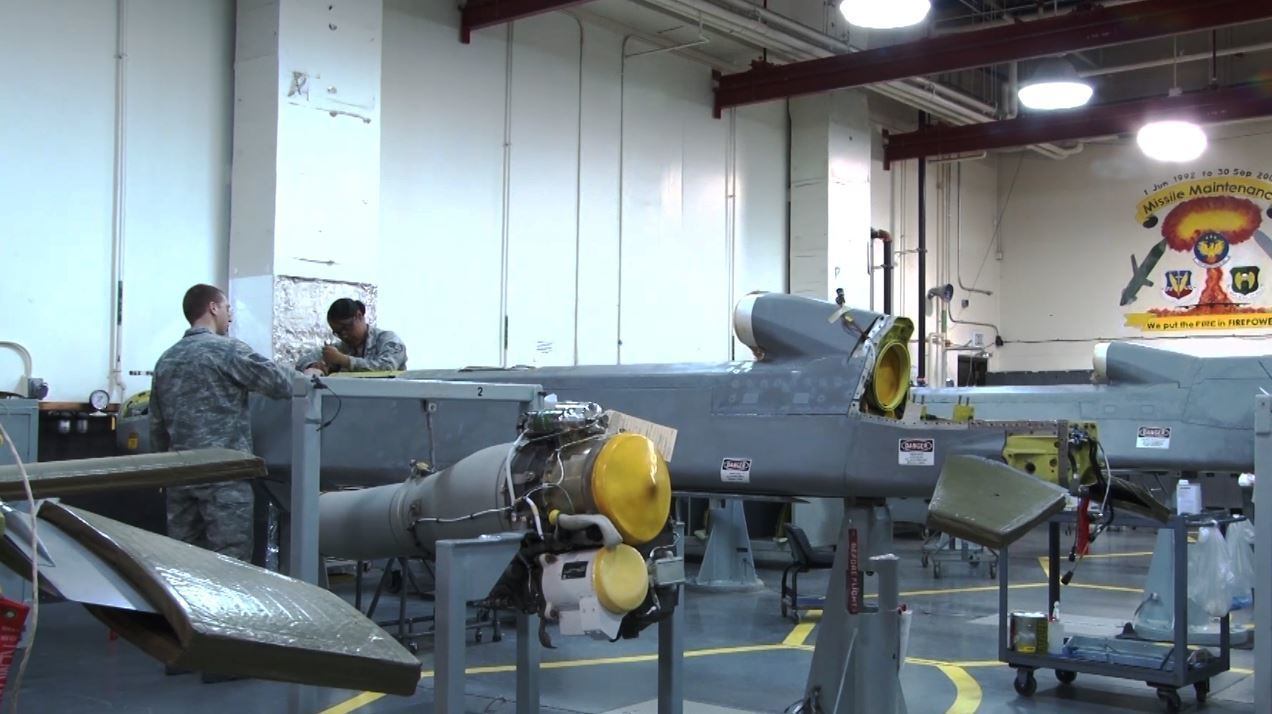America’s security interests are being threatened like never before. China and Russia pose challenges of a nature the U.S. has not confronted since the Cold War, and rogue states such as Iran and North Korea seek the means to launch devastating missile attacks. The Pentagon is modernizing to meet these challenges, including buying next-generation capabilities to strike with precision over long ranges. Long-range strikes are one of the most effective tools available to America’s theater commanders when paired with strategies that target vital resources on which an enemy’s offensive depends. As the Department of Defense modernizes its long-range strike portfolio, it should focus on its most critical shortfall: the lack of stealth bombers capable of attacking thousands of targets anywhere in the battle space.
There are two basic approaches to conducting long-range strikes. Stand-in strikes use stealth bombers to penetrate enemy defenses and release munitions in proximity to targets. The other approach is called standoff strikes, which entails using non-stealth aircraft, ships and land batteries located outside contested areas to launch missiles at targets. Air Force Chief of Staff Gen. David Goldfein has said multiple war games have shown the force that wins will have the right balance of both stand-in and standoff strike capabilities.
Today’s force does not have the right balance. The DoD’s long-range strike capabilities are all standoff systems except for the Air Force’s 20 stealth B-2s. This is a key reason the DoD is buying B-21s that have advanced stealth, sensors and data links, as well as the ability to fuse information similar to fifth-generation F-35s.
RELATED

Despite this imbalance, there is interest in developing a so-called arsenal plane for the Air Force based on a new design or an airlift aircraft. There are multiple problems with this schema.
- An arsenal plane would grow the DoD’s standoff strike capacity instead of rebalancing its force mix. Doing so at the expense of procuring more B-21s would reduce options to strike anywhere in the battle space and risk over-investing in standoff strike capacity, since other services are also buying new standoff weapons.
- An airlift aircraft strike concept doesn’t make sense from an operational perspective. The DoD may require more airlift to support distributed operations during a conflict with China or Russia. Allocating some C-17 or C-130 aircraft to conduct strikes would reduce the airlift capability available to deploy and sustain U.S. forces. Gen. Timothy Ray, commander of Air Force Global Strike Command, has voiced this concern.
- Arsenal planes have targeting limitations. The farther the standoff range of an arsenal plane, the larger the munition it must use to reach distant targets. Larger munitions translate to fewer weapons delivered per aircraft sortie, which can increase time needed to strike all targets required by theater commanders — time an enemy could use to its advantage. Long-range weapons are also less effective against targets that are hardened, deeply buried or can quickly relocate — countermeasures used by China, Russia and others to defeat U.S. precision strikes. Long-range weapons cannot carry warheads large enough to kill very hard/deeply buried targets, and weapon flight times of multiple tens of minutes give enemies opportunities to detect attacks and move assets at risk. In contrast, stand-in bombers can approach defended targets closely enough to attack them with weapons that are smaller, cheaper and have shorter flight times.
- Greater reliance on standoff strikes doesn’t make sense from a cost-per-target perspective. Weapon costs increase in proportion to the weapon’s range and sophistication. The design features of long-range weapons can drive their cost to $1 million or more, and the cheapest hypersonic (Mach 5-plus) missiles could cost $2-3 million. Short-range weapons such as the Joint Direct Attack Munition can cost less than $50,000. While next-generation standoff weapons are needed, launching these one-time-use assets against tens of thousands of targets would cost far more than reusable penetrating bombers that deliver less expensive munitions.
- An arsenal plane would not be cheaper or quicker. Restarting C-17 production alone would require billions of dollars, and a clean-sheet design could be even more expensive. Plus, since 1980, the time between major new Air Force aircraft program starts and first flights averaged six years, and another three to four years are needed before they are operational. If this track record holds true, B-21s would be joining the force in significant numbers before an arsenal plane is operational.
All of the services divested long-range strike capacity over the last 30 years due to mandates to generate savings and the lack of a peer competitor. Today, the Air Force’s 76 B-52Hs, 62 B-1Bs and 20 B-2s constitute its smallest bomber force in its entire history. As the service grows this force later in the decade, it must procure the most cost-effective capabilities that create the greatest number of options for theater commanders.
The Air Force already has arsenal planes in the form of its B-52H and B-1B bombers; it does not need another one — especially since other services are investing in new standoff weapons. Resetting the long-range strike balance for future threats requires the Air Force to fully focus on being the stand-in force on America’s war-fighting team. The country simply lacks the resources to invest in subpar or excessively duplicative capabilities.
Mark Gunzinger, a retired U.S. Air Force colonel and former deputy assistant secretary of defense for forces transformation and resources, is the director for future concepts and capability assessments at the Mitchell Institute.








